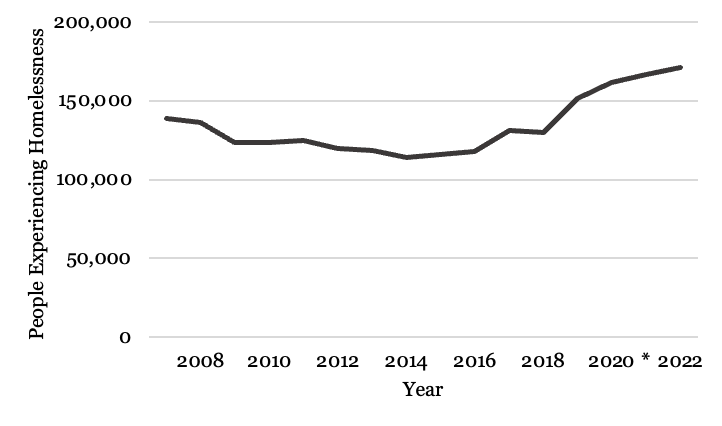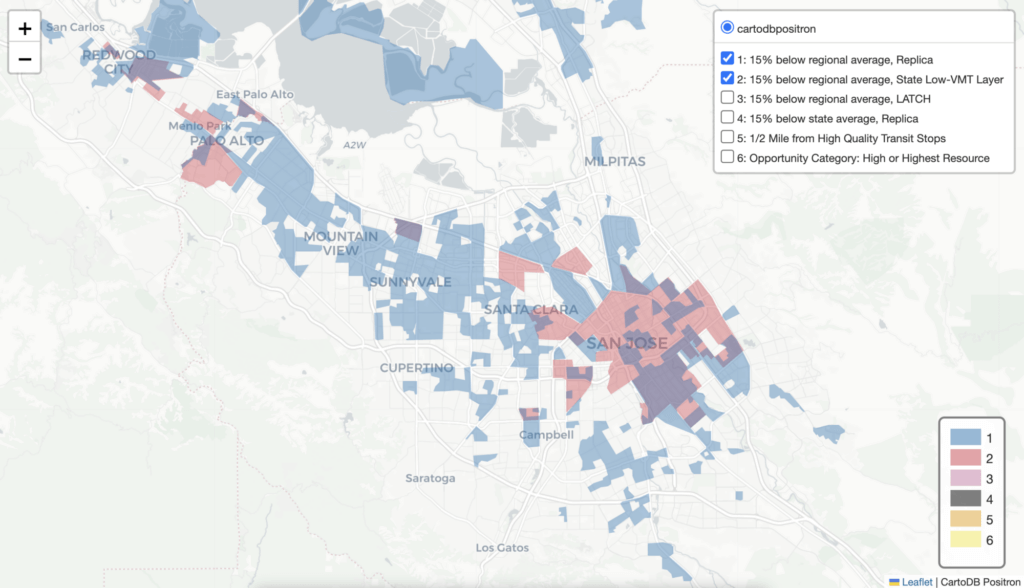Five Recent Trends in Homelessness in California
Published On October 3, 2023
The number of people experiencing homelessness in California has grown steadily in recent years. On a given night in 2022, more than 171,000 people across the state slept in shelters, vehicles, tents, and other places not meant for habitation (Figure 1). Five Recent Trends in Homelessness in California, the first research brief in a new collaborative series, takes a closer look at homelessness across the state in recent years, highlighting key trends:
- The scale of California’s homelessness crisis is larger than any other state and worsened during the Covid-19 pandemic.
- Stark racial and ethnic disparities in California’s homelessness rates have continued to grow.
- Unsheltered homelessness remains more common in California than any other state, and unsheltered chronic homelessness has grown more rapidly than homelessness overall.
- Some of the largest increases in recent years have been in places that did not previously have high levels of homelessness, including suburban and rural areas of the state.
- The range and scale of efforts to address homelessness have grown over time, including large expansions in shelter and housing capacity.
Figure 1. The Estimated Number of People Experiencing Homelessness on a Given Night in California, 2007–2022
Source: Point-in-Time Counts of homelessness from the U.S. Department of Housing and Urban Development
* 2021 counts were disrupted by the COVID-19 pandemic
These patterns underscore the need for sustained resources to address homelessness, equitable service provision, and expansions of deeply affordable housing. To understand efforts to meet these needs, the Terner Center, Abt Associates, and UCSF’s Benioff Homelessness and Housing Initiative (BHHI) collaborated on a statewide assessment, presented in a new series of research briefs. In the coming months, our teams will publish findings from interviews with hundreds of people with lived experience of homelessness, local government administrators and staff, nonprofit service providers, and other stakeholders from local homelessness and housing organizations throughout California. We also analyzed quantitative data from local homelessness service, shelter, and housing programs.
The briefs in this series will point to where progress has been made and where gaps remain. The briefs will also lift up innovations in policy and practice, and recommend additional ways to make homelessness rare, brief, and non-recurring for all people in California.
Click here read the full brief, Five Recent Trends in Homelessness in California.
Click here to see the landing page for the full research series.





